











T he Kidman Way – the B87 is an epic journey that slices through the heart of NSW – from Jerilderie in the south to Bourke in the north, honouring the inspiring vision of ‘Cattle King’ Sir Sidney Kidman, the 19th century pastoralist who dreamed of opening inland Australia.
Cutting a swathe through a landscape at the threshold of the Australian outback, its iconic waterways – the Murrumbidgee, the Lachlan the Darling – are the lifeblood of one of the nation’s most important food bowls. It’s a beautiful ribbon of road to drive. Fully sealed, well-maintained and suitable for all kinds of vehicles.
There’s such an amazing diversity of things to see and do along the Kidman Way it’s worth spending a week… or even better, two, taking a deep dive into everything this touring route has to offer.
Rich in history and heritage, ancient and modern, cultural and natural, there are stunning national parks boasting some of the best birdwatching in the country.
See an abundance of native critters, Spring wildflowers and peaceful places to camp under a canopy of a trillion stars. Visit breathtaking, little-known
Indigenous art sites and places of deep and continuing cultural significance to First Nations Australians.
In Jerilderie, walk in the footsteps of Ned Kelly and his Gang, who once held the whole town captive. In Griffith, discover a sophisticated food and wine scene, the legacy of post-war Italian migrants who knew how to make the most of its Mediterranean climate.
Travel a road with vast blue skies to the horizon and ochre-red soils sown with everything from citrus to cotton to nuts and rice, linking small rural towns with musical names like Carrathool, Goolgowi and Merriwagga, where the legend of the Black Stump was born.
There’s Cobar, where mining and miners have been integral to the town since 1870. And Bourke, whose very name conjures the spirit of outback Australia.
Along the way, meet genuinely friendly locals who’ll happily share their knowledge about this special corner of the world.
This trip’s got it all! So get set to shake off the city and savour a road trip best taken slowly.
JERILDERIE COLEAMBALLY DARLINGTON POINT
At
the southernmost point
of the Kidman
Way is a collection of laid-back towns each with its own distinctive character and variety of experiences to enjoy.
S
teeped in history, Jerilderie will be forever linked to Australia’s most famous bushranger, Ned Kelly, and the 8000 word manifesto he attempted to have published here in 1879. It was the only NSW town raided by the outlawed Gang.
As a relaxed holiday spot, it also boasts lovely lakeside walks, shady places to picnic, amazing birdlife, colourful murals and a fantastic local pool for a hot day dip (and entry is free!). There are dozens of historic sites linked to both the Kelly Gang as well as to Sir John Monash, one of the most admired citizens this country has produced.

On the banks of Australia’s longest creek, Billabong Creek, the town’s name originated from the First Nations language word ‘djrridhuray’ meaning reedy place.
In February 1879, the town was famously raided by the outlawed Kelly Gang, already on the run for the murders of three policemen at Stringybark Creek and a bank robbery in Euroa. After locking up the two local policemen, the bushrangers spent the next three days robbing and holding hostage 30 patrons of the Royal Mail hotel as well as the Bank of NSW where they stole £2,000.
Ned Kelly also intended to force the editor of the local newspaper to publish what is now known as “The Jerilderie Letter”, in

which he justified his actions and claimed to be the victim of police persecution. Unable to find the editor, he instead gave the letter to a local bank teller who later handed it to police. Only excerpts of his manifesto were published during Kelly’s lifetime.
Aside from the Kelly Gang’s connections to the town, Jerilderie was also the childhood home of Sir John Monash, head of Australia’s armed forces in WW1 and brilliant strategist credited with turning the tide of the war, leading decisive victories on the battlefields of France. He became a champion of returned soldiers and also of higher education. His portrait now graces the $100 note and his name is enshrined in Melbourne’s Monash University, Monash Freeway and the Electorate of Monash.

DON’T MISS
Heading north from Jerilderie, discover the thriving agricultural community of Coleambally, created in 1968 to service the Coleambally Irrigation Area. Then on to Darlington Point, renowned for its fishing, boating and camping by the Murrumbidgee River as well as its deep connections to the culture and Waddi language of the Indigenous Wiradjuri peoples of the area.

A self-guided tour of the Ned Kelly Raid Trail of 1879. See 16 significant historic sites, including the Royal Mail Hotel, one of six intact buildings linked to the Kelly saga.
The Old Printery, once the office of the Jerilderie & Urana Gazette visited by Ned Kelly, now houses the Doing the Bolt exhibition of convicts and bushrangers. It includes replicas of the armour worn by the Kelly Gang at the Last Stand in Glenrowan (enter via the Library)
Monash House, once the childhood home of Sir John Monash, now a great place for coffee, cake and gifts as well as an exhibition space displaying memorabilia, books and art honouring the life of this great Australian.
A relaxed picnic and stroll around beautiful Lake Jerilderie, home to many species of native water and bush birds.
Luke Park, right next to the lake, with a fantastic playground for the kids and excellent fitness stations for the grownups to round off an early morning run.

DON’T MISS
Yarrow Park, growers and producers of delicious extra virgin olive oils as well as some excellent wines. Book ahead for a cellar door tasting.
About 70 km to the north of Jerilderie is Coleambally (Coly to the locals) a town full of trees and brimming with birdsong. Even the streets are named for the many species of native birds found in and around Coly, known as ‘the town in a forest’.
Coleambally is a planned, purposebuilt community established in 1968 to take advantage of the extra water made available by the Snowy Mountains Scheme which diverted the Snowy and Eucumbene Rivers into the Murray and
The Coleambally Irrigation Area created new opportunities for agriculture in the Riverina plains and these days Coly is known for its sustainable approach to farming a wide variety of crops. A Food & Farm Festival every two years showcases and celebrates Coly’s produce and the passionate locals who grow it.
Coly is also a biodiversity hotspot and home to some of Australia’s most endangered species including the Superb Parrot, Southern Bell Frog and Australasian Bittern.

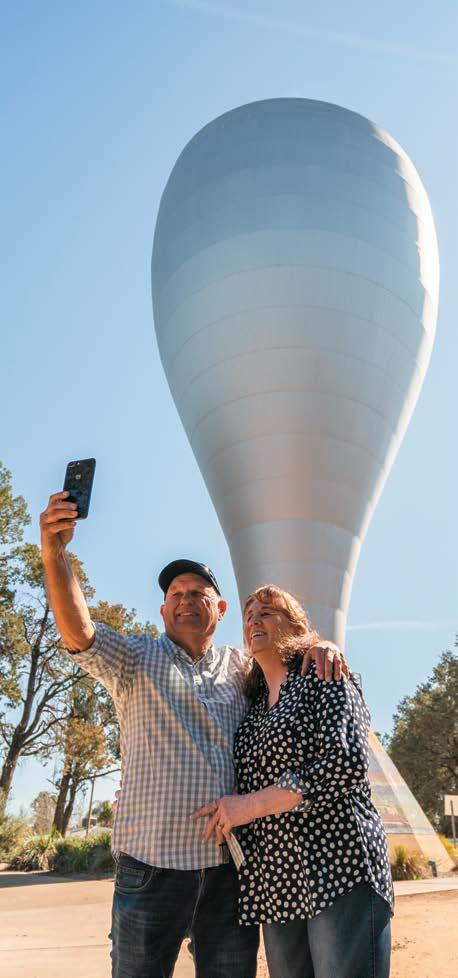

Kerri Weymouth’s Art Studio & Gallery in Brolga Place. A talented contemporary artist, the gallery is a treasure trove of rooms packed with works by Kerri and other local artists including paintings, textiles, sculpture and amazing collections of objects lining the walls.
Coly’s fantastic outdoor art. Sculptures of local birds and animals are installed throughout the town, created from scrap metal by local farmer, John Pound. Coly’s unique wine glass-shaped water tower is also a largescale mosaic mural made of 80,000 tiles depicting the history of the town and its people.
Don’t forget the binoculars! Coly is a paradise for twitchers with a number native pine woodland, ephemeral wetland and open grassland reserves providing habitat and refuge for many species of wildlife and birds. The town’s streets, named after local birds, also have a graphic image by artist Carolyn Rutledge attached. QR codes also provide information and audio recordings relevant to each of the street name species.
The Coleambally Irrigation Co-operative manages about 1200 ha of land reserved to protect the area’s biodiversity, and tours of these reserves can be arranged in advance. Find out more about the history, technologies and environmental work of the CIC Irrigation Display in Brolga Place.


J ust 20 minutes north of Coleambally via the Kidman Way and hugging the banks of the Murrumbidgee, ‘The Point’ is a perfect place to ditch the screens and soak up the simple pleasures of the great outdoors.
There are lots of places to pitch a tent or pull up the campervan. Choose a spot by the river, set up a chair and cast in a line. Watch cormorants dive for fish or take the kayak for a lazy downstream paddle. Nighttime is pure bliss when the skies are ablaze with stars.
Altina Wildlife Park, one of the best of its kind in Australia. Book ahead for an entertaining and informative guided tour, run twice daily. Discover what’s involved in caring for the many species of animals from around the world living here, their status in the wild and the important

The Indigenous Wiradjuri people make up 20 percent of the local population. Their connection to Darlington Point goes back many thousands of years. The Waddi Cultural Centre right in the heart of town is a must-do to learn about their history before and since European settlement,
The Willbriggie Regional Park is across the river from town. It’s perfect for easily accessible off-grid camping or a day’s fishing on the river and, in season, a toasty campfire when the sun goes down.

Waddi Cultural Centre is also a gallery displaying many stunning works by local Wiradjuri artists making this a great place to pick up a souvenir of a Kidman holiday.


Follow the Goanna Walking Track, a 1.8km trail from the centre of the Point following the Murrumbidgee to the Bunyip Hole, a scenic place once home to around 25 Aboriginal families during the 1930s after the closure of the Warangesda Mission.
Take a day trip from The Point to explore the wide open landscapes of Oolambeyan National Park with its historic buildings, abundant wildlife and picnic facilities.

Jerilderie Bakery coffee and a mouthwatering array of home baked pies (there’s even a pie and a half for the very hungry!) and cakes and is worth a visit just for the hall of fame featuring notorious visitors and local heroes, like AFL legend and Jerilderie son, Billy Brownless.

In Coleambally, locals beeline for the Coffee
Café, a popular place for brunch and lunch, good coffee and fresh-made juices. For a paddock to plate experience head to the


Stay

Jerilderie Motel & Caravan Park backs on to picturesque Billabong Creek. Facilities are spotless and the friendly owners are a mine of information. Right next door is the Sports Club & Chinese Restaurant with regular live entertainment, delicious food and family-friendly vibe.





A multicultural and culinary oasis that’s full of surprises, it’s easy to fall for this vibrant town just 30 minutes from Darlington Point south along the Kidman Way and 60 minutes from Hillston to the north.
A century ago, the Murrumbidgee Irrigation Area scheme and waves of migrants, especially from Italy, transformed this pocket of the Riverina into one of Australia’s most abundant food and wine growing regions.


Griffith was officially proclaimed in 1916 and named after then NSW Public Works Minister, Arthur Griffith. Walter Burley-Griffin, the architect who famously designed Canberra, worked his magic on Griffith which, along with Leeton, was built to service Riverina’s monumental new Murrumbidgee Irrigation Area scheme. Designed around a radial pattern, with wide, tree-lined boulevards, ring roads and plenty of lush green spaces, Griffith is full of Burley-Griffin’s signature touches.
Shady verandahs over the shop fronts add to the elegance of the town centre, making it perfect for an after-dinner gelati and promenade on a warm summer’s night.
Some of the biggest wine producers in the country are here as well as small, boutique wineries with chic cellar doors open for tastings. There’s a thriving art scene with contemporary sculptures and murals installed in streets, laneways, parks and gardens. A busy calendar of festivals and events and regular farmers' markets also offer plenty of reasons to holiday here.
Stay a few days to enjoy Griffith’s genuinely warm hospitality and friendly community and the many delights dished up by this unexpectedly cosmopolitan hub on the Kidman Way.
First stop, the Griffith Tourism Hub for everything you need to know about where to go, stay, eat, drink and do. The Hub has impressive interpretive displays and a gift shop packed with souvenirs, local merchandise, regional produce and Indigenous art. Friendly, knowledgeable staff will help with local information and itinerary planning.
The Hermit’s Cave Lookout for stunning, panoramic views over Griffith and the surrounding patchwork of farmland across to the Binya Hills.

Retail therapy! Griffith’s elegant tree-lined main street – Banna Ave – is full of great places to shop with all kinds of fashion, homewares, antiques, gifts and specialty boutiques.
Meet local growers and producers on their own turf and enjoy fun, immersive farm visits and tours which can be tailor made for visitors. Check current, seasonal offerings at the Griffith Tourism Hub.
The many festivals and events held throughout the year showcase the true essence of Griffith, including the Shaheedi Tournament (Sikh Games) in June, A Taste of Italy Griffith in August and Griffith Spring Fest in October.
Today, Griffith is surrounded by a tapestry of orchards, vineyards and agricultural farms producing huge volumes of crops and livestock for national and international markets. Agriculture and associated industries employ people from around the globe in the 27,000-strong population, and today, more than 60 nationalities now call Griffith home.
There are several excellent, buzzing Italian restaurants and cafés to choose from and, as you’d expect, outstanding coffee served at lively places with outdoor seating packed with post-ride cyclists and people from all corners of the world enjoying the vibe.





It’s hard to imagine, but there’s even more to Griffith than great food and wine!
Burley-Griffin’s plan allowed for an abundance of open space, and there are plenty of beautifully kept parks and gardens to stretch the legs or laze under a shady tree. City Park has a fantastic children’s playground including a water park and there’s a well-equipped outdoor gym.
Further along and backing on to the main canal, The Willows is great for an overnight free camp. It’s close to the centre of town, with a big expanse of grass for the kids and dogs to run, lots of shady trees, picnic tables and barbecues.
The town is built at the foot of Scenic Hill Reserve, part of the McPherson Ranges. The reserve is a magnet for bushwalkers and mountain bike riders with plenty of trails to suit any skill level. The views from Scenic Reserve over Griffith and the surrounding countryside to Cocoparra National Park are stunning.
This is also the place to see the Hermit’s Cave. Here, the Italian immigrant, Valeri Ricetti made his home in the rock shelters on the side of the reserve escarpment for around 30 years from the early 1920s, excavating the site and creating productive food gardens in the terraced walls.
Just outside Griffith is Lake Wyangan, a peaceful place for a picnic, barbecue
and camping. At the eastern end of the lake is Campbell’s Wetland, a hotspot for twitchers to see the many migratory species that visit here including freckled, pink-eared, blue-billed and musk ducks.
A short 30 minute drive from Griffith but a world away, don’t miss beautiful Cocoparra National Park for a day trip or overnight camp under the stars.




Discover a thriving arts scene in Griffith starting with a visit to the Griffith Regional Art Gallery.

Housed in a beautiful art deco building on the main street, the gallery features regularly changing exhibitions of work by contemporary artists and hosts major travelling exhibitions such as the biennial National Contemporary Jewellery Award and the Archibald Prize.
Enjoy a live performance at the Griffith Regional Theatre, an impressive 524 seat auditorium with a great program of live touring and local productions of plays, dance, circus, music and comedy.
Grab a map from the Griffith Tourism Hub to take in the many impressive large-scale murals by leading and emerging artists installed throughout the CBD. Learn the story of the murals and the artists who created them by scanning the QR code on the map.

Head to Centenary Walk in IOOF Park to view works by seven leading international sculptors who created large-scale artworks from monumental blocks of granite to commemorate Griffith’s centenary in 2016. These beautiful and impressive works reflect the themes of Griffith’s cultural diversity and its connection to water.
Pioneer Park Museum, on 11 ha of bushland, is home to the Italian Museum and Cultural Centre. It’s a great place for a picnic and to explore historical buildings with extensive, eclectic collections including old farm machinery that tell the stories of the Murrumbidgee Irrigation Area and the birth of the local wine industry.


Choose from many accommodation options suit every taste and pocket, from luxe hotel apartments and suites in the centre of town to well-equipped caravan parks and hidden gems like farm stays with contemporary eco pods and tiny homes. Head to visitgriffith.com.au for full details.



Griffith’s diverse multicultural population means there’s a plethora of flavours to taste at more than 50 eateries. Discover the authentic delights of Italy from mouthwatering, freshly made pasta and pizza to delicious cannoli and gelati.

an RV
As
the local


HILLSTON | CARRATHOOL | GOOLGOWI
MERRIWAGGA | RANKINS SPRINGS
The stretch of the Kidman Way between Griffith and Cobar feels like the vastness of the continent is slowly unfolding and the city is a fading mirage in the rear-view mirror.
A s the soils of these limitless plains change colour from black to red, little nuggets of towns along the way including Goolgowi, Merriwagga and Hillston punctuate kilometres of grazing and agricultural holdings, some big enough to swap a ute for a plane to check on the sheep!
Take the time to pause in these small communities and meet local people with open smiles and a down-to-earth, unhurried approach to life. Places to stay range from top-rated caravan parks and motels to comfortable hotels, free camping in beautiful national parks and one of the best farm-stays in NSW.




TFor anyone interested in getting immersed in nature, side-trips just off the B87 to Rankins Springs, the Cocoparra and Willandra National Parks are a rare chance to see many native plants and animals including several threatened species as well as important sites of cultural and spiritual significance to the traditional custodians of these lands.
There’s also plenty of pioneering history and heritage, opportunities for fishing, bushwalking, riverside picnics and simply being in places where the sky meets the horizon and the silence is so deep you could bathe in it.
carrathool.nsw.gov.au/visit #VisitCarrathool
hese little villages all have their own charm and unique character, starting with Carrathool with its very photogenic historic bridge and the pretty Pinkers Beach on the Murrumbidgee a short drive from town and perfect for a picnic, a dip or to cast in a line.
Further north along the Kidman there’s Goolgowi. This quiet little town of 400 locals began life as a railway siding when the line from Griffith to Hillson was built in the 1920s.
These days Goolgowi is surrounded by an agricultural landscape that changes with the seasons. Large-scale farms produce potatoes, nuts, garlic, cotton, dry area wheat and grains as well as wool, beef cattle and chickens.
It’s also the administrative centre for Carrathool Shire Council, extending from Carrathool to Hillston. The pioneering
history of the area was immortalised in an impressive, 5m x 1.2m multi-textile soft sculpture created by local women to mark Australia’s Bicentenary in 1988. See it at the public hall by arrangement with Carrathool Shire offices.
Just 20 minutes along the Kidman Way from Goolgowi is the little village of Merriwagga, home of the Black Stump Hotel and a Memorial to Pioneer Women sculpture by the artist, Ron Clark.
The site also commemorates the tragic story behind the Black Stump. Barbara Blain burned to death in 1886 in a campfire accident at a place used by drovers about 10km south of Merriwagga. Her charred remains were all that her husband, a bullock driver, found when he returned to their camp.
Across the road, the pub is a classic, boasting the tallest bar in the Southern Hemisphere supposedly built to accommodate stockmen who could ride their horses inside to enjoy a beer without pausing to dismount!
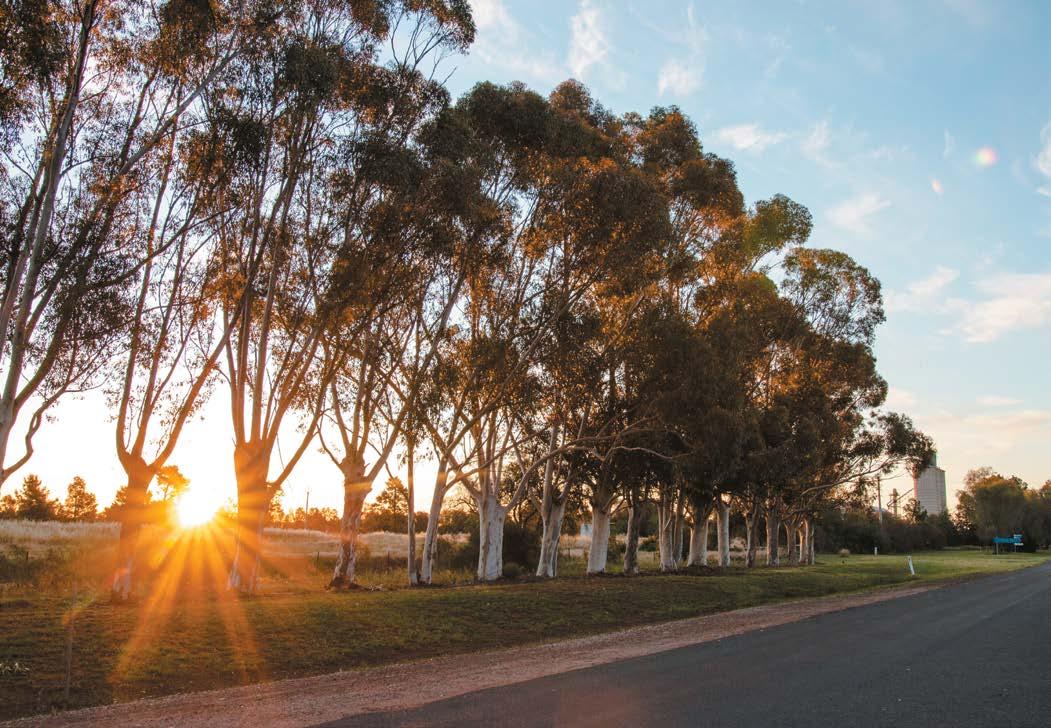
A stay at Corynnia Station.
A range of options, from beautifully appointed group accommodation to a luxurious VIP suite in the historic homestead are available.
The gardens here are truly gorgeous, with a swimming pool, tennis court, flocks of Insta-worthy silkie hens, loads of artistic touches, farm tours, seasonal campfires and excellent gourmet meals all adding to the five star experience. Arrive by car or by plane!
The large-scale Bicentennial soft-sculpture curtain at the Goolgowi public hall
The Black Stump Hotel in Merriwagga. Full of quirky touches, friendly hospitality and good food.
A day or multi-day side trip to Cocoparra National Park and Rankins Springs for a chance to see some of Australia’s most endangered birds.


With a population of around 1500 Hillston is the biggest town of the largely rural Carrathool Shire.
It’s a pretty place built along the Lachlan River with the seasonal Lake Woorabinda in the heart of town surrounded by shady grassed areas with picnic tables and barbecues. A 1.2km walking track crosses a swing bridge and in the warm months it’s ideal for spotting black swans and pelicans.
There’s an ever-expanding outdoor trail featuring colourful installations of sculptures and large-scale works by local artists. Don’t miss Golden Hour over the Lachlan, a stunning new mural on the 23m water tank by artist Krimsone - Janne Birkner vividly celebrating local flora and fauna. A short 300m walk or drive from the main street, there’s long-bay parking available on site.
The Red Dust & Paddymelons Gallery showcases work by local artists and makers as well as products like the famous Hillston Black Garlic. The gallery also doubles as the home of the Visitor Information Centre.
For history buffs, follow the Hillston Heritage Walk. Pick up a comprehensive
guide at the Visitors Centre to learn the stories of the buildings and the people who have lived and worked here since the 1860s.
The Lachlan is a renowned place to catch a fish and there are plenty of quiet places to drop in a line as well as peaceful spots to free camp by the river.
Lake Woorabinda is a manmade lake which relies on water allocations. In winter it is emptied and then refilled in late Spring when it once again becomes a popular playground for water skiing, paddle boarding and



DON’T
Picking up an original memento of the Kidman Way created by local visual artists and makers at Red Dust & Paddy Melons gallery



While you’re there, pick up a jar of Hillston Black Garlic to take home. This locally grown gourmet treat has become a bestseller for the local growers since they began experimenting with fermenting their garlic a few years ago.
Find a big shady tree for a lakeside picnic or fire up a barbecue at John Fensom Park. A great spot for families there’s playground equipment, a skate park and right next door a fantastic swimming pool for a dip on a hot Kidman Way day.

Prop by the river and try your luck catching a Murray Cod Golden Perch (otherwise known as Yellowbelly).
Hillston’s fishing is the stuff of legend and every year in August for the past 30 plus years anglers from far and wide flock to Hillston for the annual Hook, Line and Sinker Festival.

The ruggedly beautiful Cocoparra National Park is about 40 minutes north of Griffith and takes its name from the Wiradjuri word for kookaburracocupara or gugubarra - entirely fitting for a place known for its incredible diversity of birdlife.
Several species listed as vulnerable or threatened like Turquoise Parrots and Glossy Black Cockatoos can be found here, the craggy landscape full of native pines and wattles providing abundant habitat and food for birds as well as many other animals like goannas and smaller lizards, kangaroos and emus.
Indigenous people used the area in winter when Cocoparra’s waterfalls flowed into the sheltered valleys. Scar trees once used to make coolamons, campfire hearths, tools and artefacts made from the park’s abundant raw materials have been found here.
This special place is easily accessible by 2WD and offers well marked trails to walk and quiet places to camp which are well equipped with barbecues and toilet facilities.

F ormerly Big Willandra Station, the Willandra National Park is 64 km from Hillston and includes 60km of frontage to Willandra Creek, once an important travel route and food source for the Ngiyampaa people of these western plains.
Before European settlement and a century of intensive livestock grazing that followed, these plains were covered in the saltbush and native grasses now slowly returning to Willandra along with many bird and animal species.
Evidence of Aboriginal use of Willandra has been found throughout the park including ancient campsites and artefacts, hearths and scar trees.
Willandra is a great place to hike or cycle, especially after seasonal rains when colourful wildflowers light the landscape. Sunsets are simply spectacular! The original homestead is still there as well as shearing sheds and quarters which can be booked for overnight stays as well as designated places to camp.

In Hillston, a range of accommodation is available including caravan parks, motels and the Old Bank Guest House in the main street. Eat at any number of places - The Hillston Ex-Servicemen's Club is great for Chinese food and the Bread Basket Bakery is well known for great coffee and big breakfasts.
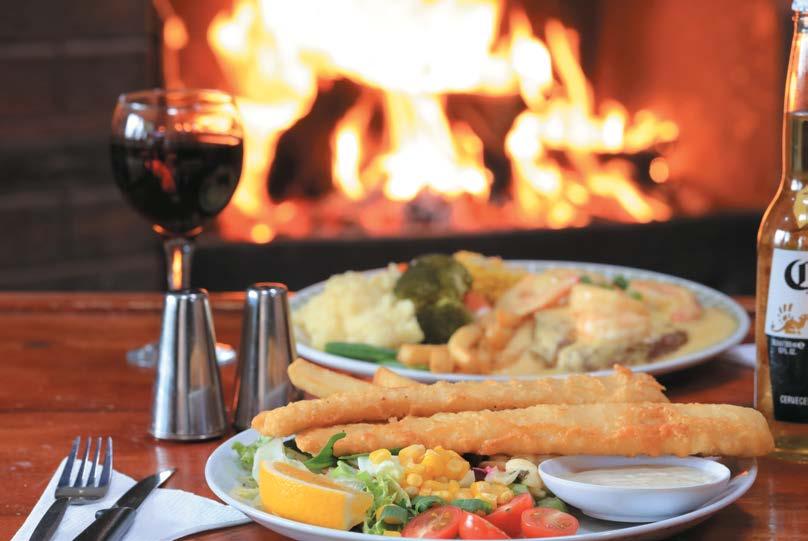
In Merriwagga, stay at the Black Stump Hotel and spend a fun night with the locals at one of Australia’s most iconic pubs.


Discover a five-star gourmet farm-stay smack in the middle of a 17,000 hectare wool and cotton farm, Corynnia Station. It’s ideal for couples or groups, offers tours, amazing sunsets and panoramic night skies.
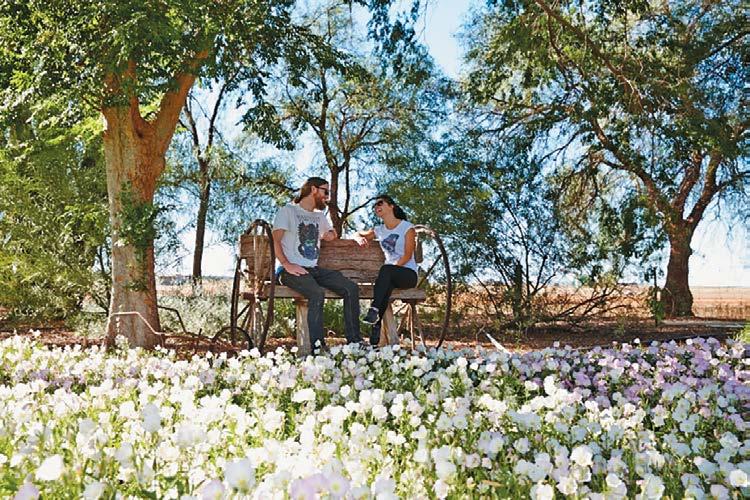

Between Hillston and Cobar, the scenery transforms from broadscale agricultural farmland to panoramic forested landscapes studded with native pines, eucalyptus and low shrubs.
Massive birds of prey are a frequent sight as they hover just above the tree line searching for their next meal.
The Australian outback looms large in this section of the Kidman Way. It’s a great stretch of road to drive!
Once you arrive, it’s worth staying put for a few days to enjoy Cobar’s many attractions. There’s plenty of accommodation to suit any budget, fascinating history of the still-operating mining industry, extraordinary indigenous art sites and one of the best contemporary cultural experiences this side of the Sydney Opera House!
The best place to start is at the Visitor Information Centre near the town entrance, in the former administration building of the Great Cobar Copper Mine. A recent major restoration and upgrade of the building has created an impressive new museum space with well interpreted displays of photographs, objects and artefacts bringing to life Cobar’s indigenous, pastoral, mining and social histories.
Pick up maps, guides and plenty of local tips from the friendly VIC staff and get ready to discover why Cobar is known as the jewel of the outback.



DON’T MISS
The
and compelling
A



Cobar was known as ‘Kubbar’ (thought to mean ‘red earth’ or ‘burnt earth’) to the Indigenous Ngiyampaa Wangaaypuwan people of this place whose connection to the area goes back many thousands of years
About 70 kms from town is the nationally significant Mt Grenfell Historic Site which protects three important rock art sites in an area where a semi-permanent waterhole and rockshelf provided shelter, food and ceremonial places for indigenous people until their displacement after the arrival of European pastoralists from the 1840s.
Mt Grenfell also provided the raw materials for tools and weapons as well as pigments for body painting and rock art. There are 1300 paintings here depicting Aboriginal people and various animals significant to the area and culture.
Jointly managed by Mt Grenfell Board of Management and NPWS, Mt Grenfell is well maintained with picnic tables and toilet facilities. Enjoy the utter stillness of this special, timeless place where a deep silence is broken only by the chattering of birds.
European settlers began taking up runs in the area from the 1860s, bringing with them huge mobs of sheep.
Despite the isolation, transport difficulties, devastating droughts and repeated rabbit plagues and bushfires, wool remained the mainstay of the industry around Cobar until the 1980s.

More recently, many pastoralists have switched from wool growing to beef cattle and rangeland goats as well as meat sheep, and the once all-important shearing sheds that contributed so much to the annual Australian clip are now mostly silent.



In 1870, two Aboriginal guides led a team of tank-sinkers to what proved to be treasure in the form of copper at a local waterhole. They had struck a rich load, as the area was found to have one of the biggest deposits of high quality copper ore in the world.

Cobar’s mining industry was born and has continued to play a pivotal role in the fortunes of the town for a century and a half. The mines around the first discovery amalgamated in 1876 to form the aptly named Great Cobar Copper Mine and further discoveries of copper and gold were made in the vast mineral fields.
The CSA Mine, named for the Cornish, Scottish and Australian nationalities of its discoverers, was pegged out in 1872 while gold mining expanded throughout the 1880s and ‘90s and into the 19th and 20th centuries at the Peak, the Occidental, the Fort Bourke and many other mines along the line of lode.

Through the decades the town and the little communities which grew around new mines beyond Cobar waxed and waned with the changing fortunes of the mining companies. Today, mining remains key to the economic prosperity of Cobar and its surrounding communities.
Sidney Kidman had a close connection to Cobar and his own fortune was partly made here as a young man when he opened a butcher’s shop in 1876. He was also an early contributor to mining as a teamster hauling ore to the river to send to Adelaide. This, and his experience with transporting goods around the area, taught him valuable lessons about business success. As well as the butchery, Kidman’s most significant involvement in Cobar was a coach transport he ran in partnership with James Nichols.
Visit the Great Cobar Museum and the Miners Memorial to learn about Cobar’s mining heritage, the booms and busts, lives lost and subsequent improvements to mine safety and the social impacts of the industry on the Cobar community across 150 years of continuous operation.
The Memorial is an impressive, moving place which honours the 172 miners who died as a result of accidents working in Cobar’s mines between 1870 and 2017. The Heritage Park surrounding the Memorial features sculptures and largescale mining equipment once used in local mining operations.

Cobar Sound Chapel
Since it opened in 2022 visitors from around Australia and overseas have come to Cobar just for this experience which marries music, art, poetry, light, architecture and nature in a repurposed water tank perched on a low hill at the edge of town.
Composer and sound artist George Lentz and the venerated Australian architect, Glenn Murcutt, have created something of sublime beauty here. From the outside it’s deceptively simple but step inside the chapel and find something completely otherworldly.

A soundscape that’s ethereal and sometimes edgy fills the room 24 hours a day while an oculus roof opens to the heavens above capturing all the colours and movement of the desert sky by day and the breathtaking Milky Way by night.
Bookingsessentialvia Great Cobar Musuem
Federation Walking Track

Great for a morning walk or join the locals on their regular Saturday morning Park Run around the Newey Reservoir.
Starting at the Great Cobar Museum, the track is a great place to see up close many of the area’s 200 species of birds, including Rainbow Bee Eaters, babblers, apostlebirds, blue-billed ducks, dusky woodswallows to name a few. Local bird guides can be purchased at the Visitor Centre. Don’t forget the binoculars!
Old Reservoir
Abundant birds and other wildlife can be readily seen at the Old Reservoir.
The Pub Route self-guided tour Delve into the stories and visit the sites and remnants of the many oncethriving historic pubs that grew up along transport routes between Cobar and Bourke and the villages beyond.


For eating out in Cobar just take a walk down the lively main street to find plenty of dining choices as well as mighty good coffee.
Glen Hope Bush Camp, is located 5.5km east of Cobar. The camp offers travellers a safe, serene retreat to embrace Australia's natural beauty, recharge by campfires, under the great southern skies and connect with others in a welcoming open and rural landscape.
For a true outback experience, head to the little village of Nymagee, an hour south of Cobar. Spend the night and enjoy dinner and the family-friendly vibe at the Metropolitan Hotel. Or try the Four Corners Farm Stay. This working 9000 ha station offers camping and cabins and plenty of activities like art classes and even a bit of farm work if you feel like pitching in!
Meralda Station Farm Stay is just on the edge of town but a complete world away. There are glamping, camping and secluded bush camping options available. Meralda is full of quirky touches, offers wellbeing and art classes, incredible stargazing, a well set-up camp kitchen and one of the best outdoor showers you’ll ever encounter! Bookings essential.

About an hour and a half from Cobar don’t miss the Royal Hotel at Mt Hope. With a motto of ‘Let’s meet along the Way’ the Royal is a hub on the Kidman Way for travellers coming from all directions. This is a superfriendly place for a drink, great meals including top notch burgers and pizzas and a recently extended undercover outdoor area with sweeping views of the surrounding countryside. Perfect for an icy cold beer! There’s inhouse accommodation, free camping out the back and coming soon, Royal Cabins. Watch this space!

And then there’s Euabalong, a peaceful little getaway on a bend in the Lachlan River a couple of hours south of Cobar. The caravan park is just across from the river and only a short walk to the pub.


Begin at the Back O’ Bourke Information and Exhibition Centre to learn about the complex histories and ancient cultures of the First Nations peoples of the Darling-Baaka region. The Standing Stories sculptures of 3D artworks represent the life and stories of some of the 22 indigenous language groups of the vast Back O’ Bourke.
Even if you’ve never set foot here, chances are you’ve probably heard of it or at least pictured it in your mind’s eye. Remote. Far flung. At the edge of the outback. Out the Back O’ Bourke.
As the last – or first – major stop on the Kidman Way about an hour south of the Queensland border you could be forgiven for imagining Bourke as a place of emptiness, between wilderness and nothingness. Nothing could be further from the truth!
In the 19th century, Bourke, on the Darling-Baaka River, was the largest inland port in the world, a hub for Australia’s booming wool trade shipping the valuable commodity from inland Australia to the markets of the world. Today it’s still a busy centre at the crossroads of major north-south, eastwest routes transporting not just locally grown wool and beef but more recently, crops like cotton, wheat, citrus and more.
For visitors, Bourke is a great place to indulge in some proper downtime. Get your bearings and the lowdown on what to do and see, where to eat,
drink and sleep from the friendly and knowledgeable staff at the impressive Back O’ Bourke Information and Exhibition Centre.
You’ll find plenty of reasons to stay Back O’ Bourke for a few days, even if it’s just being immersed in a place of startling beauty of big blue skies, red earth, vast floodplains and stony ranges. For photographers and artists there’s endless inspiration in the ever-changing colours lighting the landscapes, the gobsmacking sunsets and clear starstudded night skies.
It’s also paradise for fishing enthusiasts, perfect for a gentle putt along the river in a tinny until you find a quiet bend to drop in a line. There’s amazing birdlife to spot right in the heart of town where you can watch gorgeous red-tailed black cockatoos socialising in majestic red gums across from the historic wharf.
Visit places of deep cultural significance to the Ngemba (Ngiyaampa) ‘Stone Country’ people whose connections to this country go back many thousands of years. Learn about Bourke’s more recent past, its thriving maritime trade and its links to famous Australians like Henry Lawson, CEW Bean, Nancy Bird, Fred Hollows and Sir Sidney Kidman himself.
This is no ordinary destination! Back O’ Bourke is a timeless place. A state of mind really. So relax, take a breath and be charmed by this mythical place far away from the everyday.
Along the Kidman Way between Bourke and Cobar, where the traditional custodians of the land are the Ngemba (Ngiyaampa) peoples, lies Gundabooka National Park. Just under an hour's drive from Bourke itself, it is highly recommended for its protection of ancient rock art and other cultural sites in a profoundly beautiful landscape full of walks, spectacular views and deep connections to the world's oldest continuously surviving culture.


DON’T MISS Gundabooka National Park is about 50km south of Bourke and 110km north of Cobar on the Kidman Way. Camping is available and there are fantastic walks including the Yapa (Mulgowan) Aboriginal rock art site and Little Mountain Track with spectacular views from the summit. The National Park is a noted conservation area protecting several threatened bird species.
The Standing Stories selfguided sculpture and audiovisual tour for an introduction to the indigenous peoples of the Bourke area.
Percy Hobson Mural, a largescale tribute to Australia’s first indigenous Commonwealth Games gold medallist. A Bourke local, Percy Hobson, set a record in the high jump at the 1962 games in Perth, clearing the bar at 6’ 11” (2.11m). The mural, painted on a water tower at the entry to Bourke on the Mitchell Highway also features handprints of the entire Bourke community.
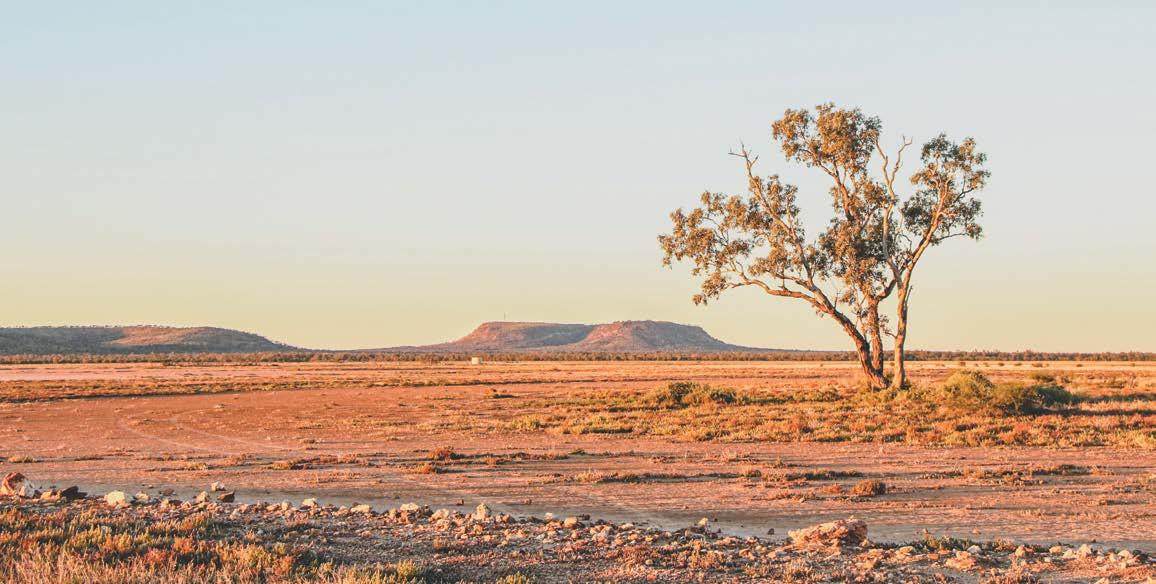
The Bourke Aboriginal Art Gallery in the main street is owned by the local indigenous community and features works of local artists using traditional and modern techniques in paintings and carvings.

One of the best things to do in Bourke is an entertaining trip down the Darling-Baaka River on the PV Jandra to learn about Bourke’s history as the world’s busiest inland port.
At the height of the river trade, three wharves serviced some 200 paddle steamer cargo barges. A replica of these wharves can be viewed at the Wal Mitchell Wharf

You can learn more about the paddle steamer history on a self-guided walk or drive of the well-interpreted Maritime Trail. This trail follows the riverbank on the opposite side of the wharf area which can be accessed via North Bourke by going over the heritage listed North Bourke Bridge. A landmark in its own right, the North Bourke Bridge is Australia's oldest moveable lift span bridge dating back to 1883, during the peak of the river trade.
Take a self-guided tour of Bourke’s historic architecture, with some buildings dating back to the booming 1870s and 80s.
Bourke‘s Historic Cemetery is a must visit for a moving, self-guided tour of graves that tell the many stories of past lives and sometimes tragic deaths. The world-renowned eye surgeon, Fred Hollows, who worked in remote communities in and beyond Bourke helping to restore the sight of Aboriginal people afflicted with eye diseases, is buried in the Bourke cemetery. Professor Hollows asked to be buried under a coolibah tree in Bourke. His wish was respected and a stunning stone monument honours him and his inspirational work.

As European settlers pushed further inland in the early 19th century annexing vast swathes of land for sheep, traditional indigenous owners lost their lands, their way of life and often their lives in the waves of colonisation.
Their loss was the pastoralists’ gain as the wool produced from their immense holdings brought untold riches and created thriving towns off the sheep’s back.
Bourke played a pivotal role in the development of the Australian wool industry as the Darling-Baaka became a busy highway for paddle steamers loaded with the clip. Later, when the railway was

built as far as Bourke the town became an even more important inland transport hub and a magnet for adventure-seekers, fortune-hunters, missionaries, shearers, unionists and poets.
Sent west by the editor of the Bulletin, J.F Archibald, Henry Lawson’s experiences in 1892–3 working as a roustabout at nearby Toorale Station, as well as a house painter and contributor to the Western Herald newspaper in Bourke provided plenty of colour and inspiration for his poetry and stories, notably the Heart of Australia published a decade a later. “If you know Bourke”, he wrote, “you know Australia”.


I f getting into nature is your thing, the Back O’ Bourke serves it up on a grand scale.
You don’t need to go far to see plenty of Australia’s iconic wildlife with flocks of emus and plenty of kangaroos roaming freely across the landscape.
The river and surrounding swamps and wetlands, wooded plains and spinifex grasslands also provide habitat for an extraordinary number of bird species. Pick up a Back O' Bourke Birds guide from the Information and Exhibition Centre before you head out with binoculars and see how many you can tick off the list.



Toorale National Park is about 75km from Bourke towards Louth and was once part of the biggest sheep station in the world owned by the wool baron, Sir Samuel McCaughey. It was declared a national park in 2008 and is an incredibly special place at the intersection of the Darling-Baaka and the Warrego Rivers. So the wildlife is amazing! The original homestead is there with fantastic camping, walking trails and fishing opportunities It is also deeply connected to the local indigenous people.
Ledknapper Nature Reserve to the north of Bourke is a beautiful drive after Spring rains when the red sandhills become a carpet of wildflowers.
May’s Bend on the Darling-Baaka is about 15km from town via North Bourke. This is a lovely spot for a picnic and a spot of fishing. On the way back, call into the Back O’ Bourke Gallery to see Jenny Greentree’s original paintings capturing the stunning, everchanging landscapes of Bourke and surrounds.


Bourke Lock and Weir on the Darling-Baaka, built in 1897. Head downstream to the fishing reserve from here or just prop quietly and watch the cormorants drying their wings.
A self-guided tour of The Pub Route for a unique journey that takes in the sites and remnants of the many historic hotels and wayside inns that grew up along transport routes between Bourke and Cobar and their surrounding villages.

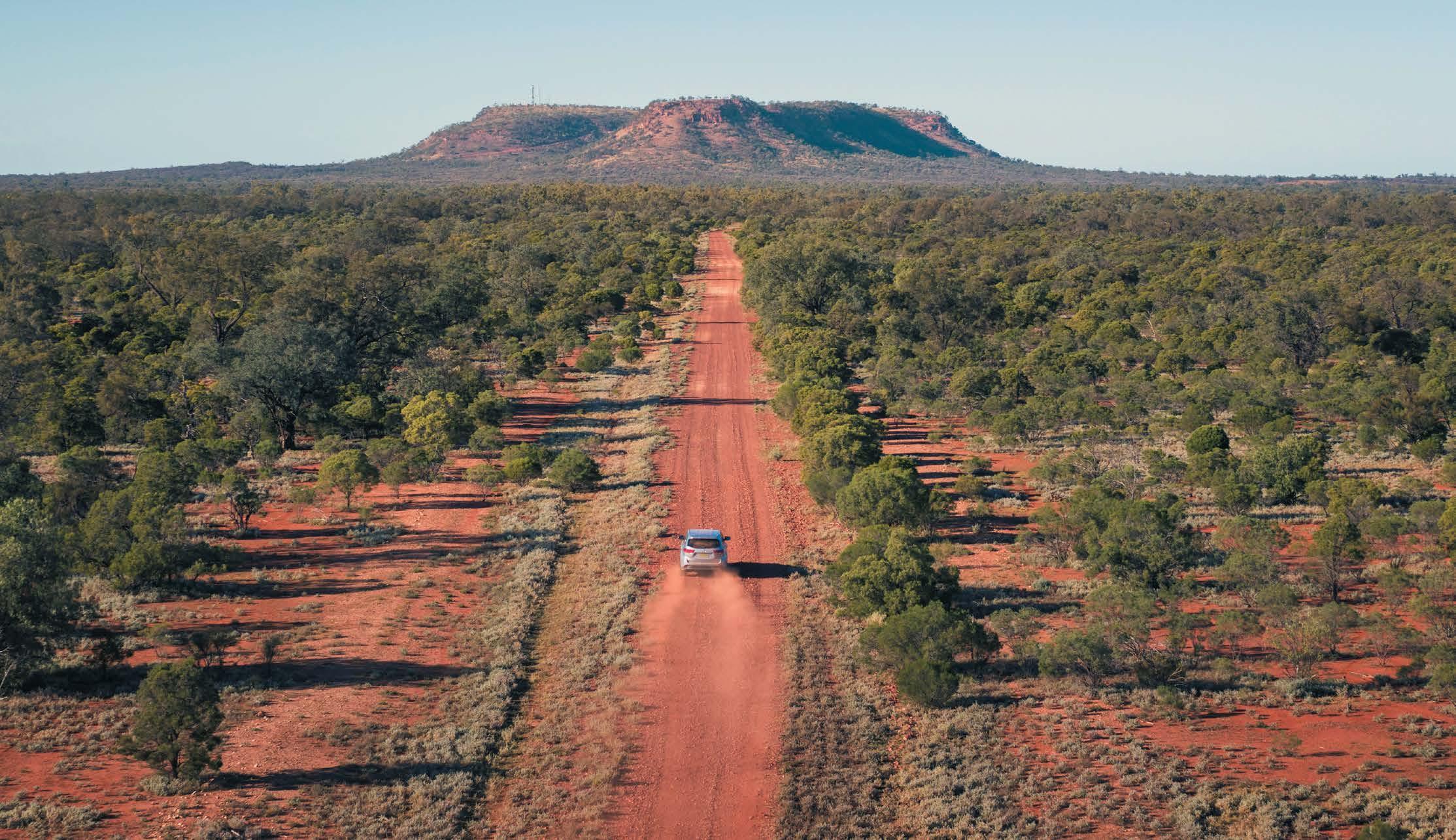
The Kidman’s Camp on the Kidman Way in North Bourke backs on to the river and is an absolute oasis in hot weather with plenty of shady camp sites and not one but two fantastic swimming pools! It’s also right next to the mooring of the PV Jandra.

Farm stays near Louth, don’t miss the opportunity to visit Rose Isle Station, Dunlop Station, and Trilby Station all situated on the majestic Darling-Baaka River, they all have self-contained accommodation secluded camping grounds with activities unique to their respective histories.

Mt Oxley, the unmistakable table-topped plateau rising from the plains about 45 minutes east of Bourke is a privately
camping
with its 360-degree views or by the

Catch a free courtesy bus from anywhere in Bourke and North Bourke to the local bowling club to enjoy a quintessentially outback meal at Wing Garden Chinese restaurant.









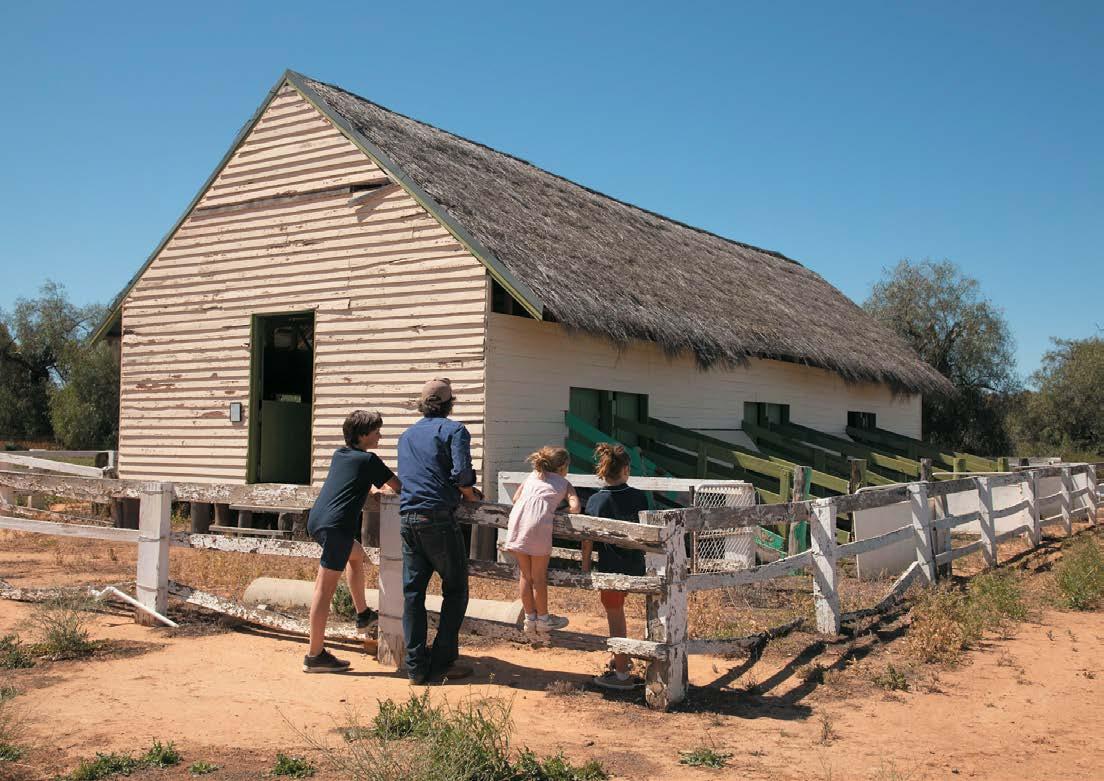

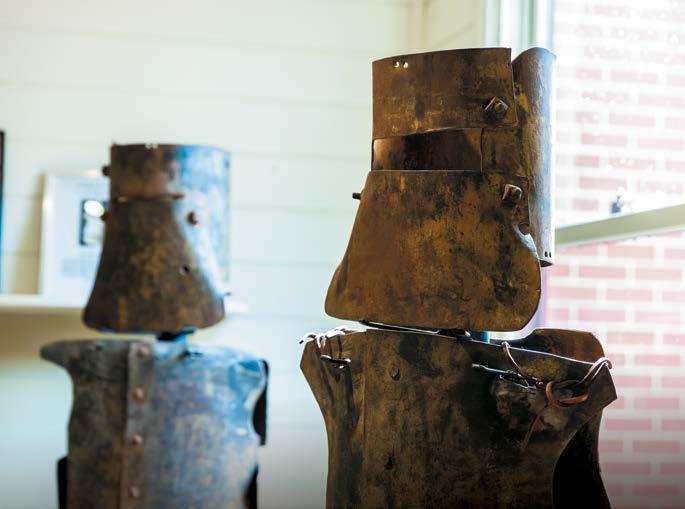


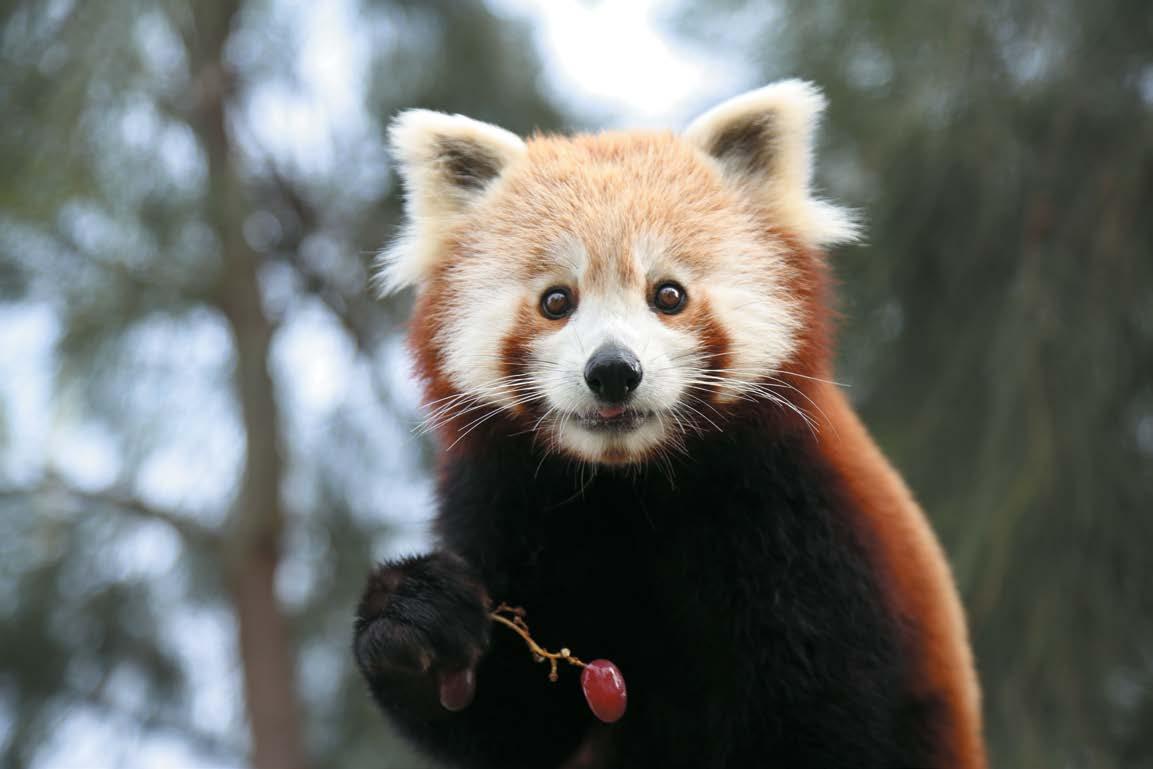
•
JANUARY
APRIL
AUGUST
FEBRUARY

MARCH
• Jerilderie Fun Fair
• Welcome to Bourke
• Hillston Lake Woorabinda Festival
EASTER
• Jerilderie Good Friday Appeal Charity Golf & Bowls Community Day
• Griffith Easter Party
• Back O Bourke Easter Festival including the Back O’ Bourke Picnic Races

SEPTEMBER
MAY
• Bourke P&A Show
• Cobar Show
• Cobar Races

OCTOBER
JUNE
• Jerilderie MND Charity Golf & Bowls Day and Ice challenge
• Griffith Shaheedi Tournament (Sikh Games)
• Bourke’s Annual Smoking and Camp Oven Cook Off
JULY
• Jerilderie Roundup BNS Ball
• The Gap 440, ARB Australian off Road championship Hillston

•
